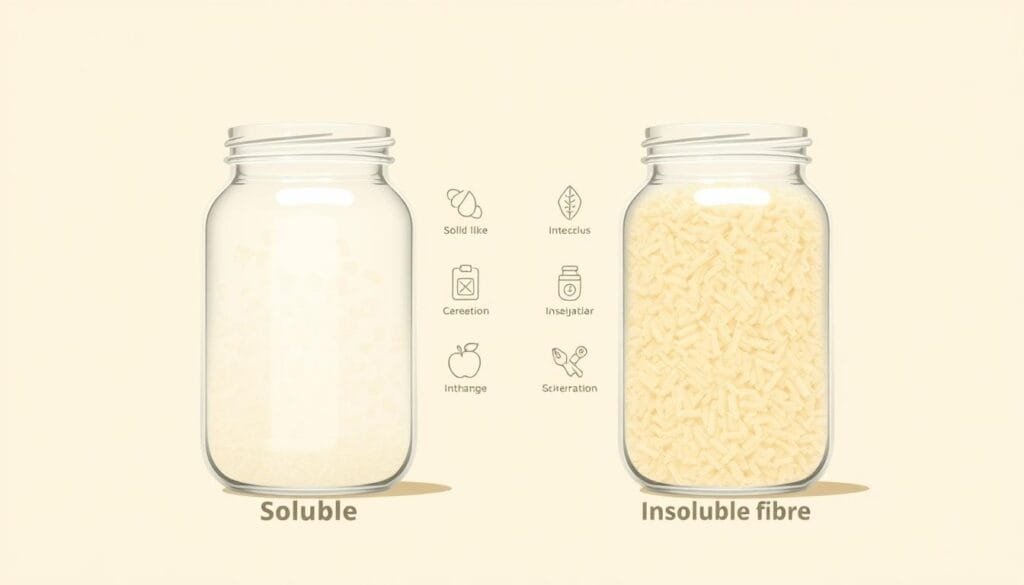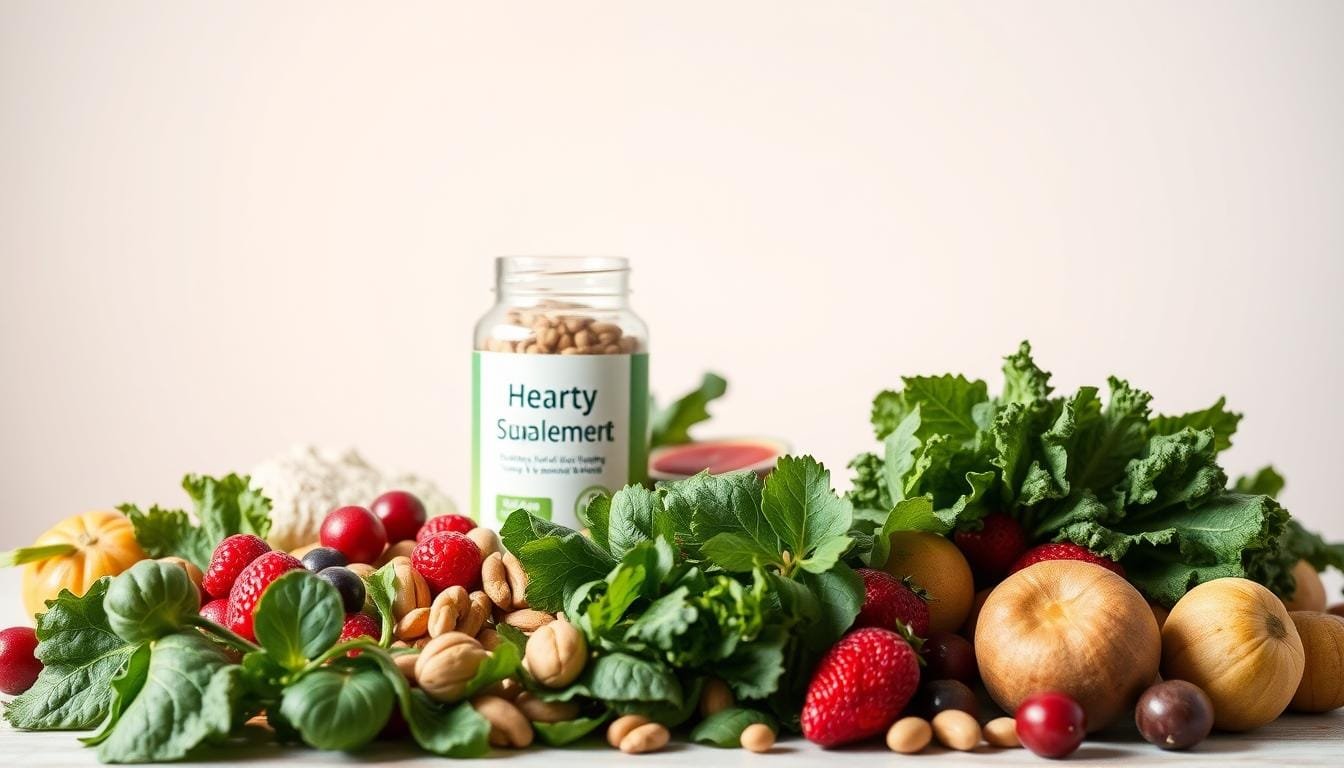Currently Empty: RM0.00
Maintaining healthy circulation starts with smart lifestyle choices. Emerging studies highlight how specific nutrients play a role in promoting balanced cardiovascular function. Over 24,500 global studies reveal consistent patterns linking certain dietary habits to improved circulatory health across diverse populations.
Wellness Concept bridges science and practical health strategies. Their team offers personalized guidance for those seeking natural approaches to enhance well-being. With consultations available via WhatsApp (+60123822655) daily, they help individuals tailor plans that align with their unique needs.
This guide explores how targeted nutritional adjustments can influence circulatory metrics. Readers will uncover science-backed methods to integrate these changes safely while tracking progress. The focus remains on sustainable habits rather than quick fixes.
Key Takeaways
- Global research confirms connections between specific nutrients and circulatory health
- Different dietary components work through distinct biological mechanisms
- Practical integration strategies enhance long-term consistency
- Personalized plans yield better results than generic approaches
- Professional guidance helps optimize individual outcomes
Understanding dose-response relationships proves crucial for maximum benefits. Wellness Concept’s experts combine clinical knowledge with real-world application tips. Their approach helps users make informed decisions about nutritional support for overall vitality.
Introduction to Fiber Supplement Blood Pressure Solutions
Global health patterns highlight a critical need for smarter approaches to heart health. With cardiovascular conditions impacting millions yearly, innovative strategies are reshaping preventive care. Wellness Concept emerges as a trusted partner in this vital health journey.
Wellness Concept’s Specialized Approach
This Malaysian-based team combines nutritional science with personalized care. Their experts analyze individual needs to create tailored plans that support circulatory health. Clients receive guidance through convenient WhatsApp consultations (+60123822655) available weekdays and weekends.
Professional support helps users navigate complex health information effectively. The company focuses on sustainable habits rather than temporary fixes, ensuring lasting results. Their methods align with global research showing diet’s powerful role in preventing chronic conditions.
The Critical Need for Action
Cardiovascular issues caused over 20 million deaths globally in 2021 – one every 40 seconds in the US alone. Unmanaged hypertension often leads to severe complications like strokes and kidney damage. Early intervention through lifestyle changes proves more effective than later treatments.
Wellness Concept emphasizes practical dietary adjustments as primary prevention tools. Their strategies help reduce healthcare costs while improving quality of life. As research evolves, their team stays updated on the latest nutritional breakthroughs for optimal client outcomes.
Understanding the Connection Between Dietary Fiber and Blood Pressure
Modern nutrition science continues to uncover fascinating links between what we eat and how our bodies function. Specific food components interact with biological systems in ways that influence long-term wellness outcomes. One such relationship involves plant-based nutrients and their effects on circulatory efficiency.
The Science of Nutrient Absorption
Soluble varieties like beta-glucans form gel-like substances during digestion. This natural process slows carbohydrate breakdown, helping maintain stable energy levels throughout the day. Improved metabolic regulation supports multiple aspects of heart health through interconnected mechanisms.
Beneficial gut microbes transform these nutrients into compounds that relax blood vessels. Short-chain fatty acids like propionate act as natural messengers, influencing arterial flexibility. Emerging studies suggest this microbial activity helps balance hormonal systems involved in fluid regulation.
Three key benefits emerge from regular consumption:
- Enhanced insulin response efficiency
- Optimized cholesterol processing
- Reduced inflammatory markers
These effects combine to create a protective environment for cardiovascular tissues. Researchers observe improved vessel elasticity and better nutrient delivery in individuals with consistent intake patterns. The cumulative impact demonstrates why diverse food sources matter for holistic care.
Wellness Concept’s nutrition experts help clients apply these insights through practical meal strategies. For tailored advice on optimizing your dietary patterns, message them via WhatsApp at +60123822655. Their team bridges scientific research with achievable daily habits for lasting results.
Global Evidence on Fiber Supplement Blood Pressure
Cutting-edge investigations reveal how nutritional strategies gain validation through worldwide collaboration. A landmark analysis of 24,500+ entries in PubMed and Google Scholar identified 11 high-quality studies demonstrating consistent cardiovascular benefits. These peer-reviewed works spanned six continents, offering insights applicable to varied genetic backgrounds and cultural contexts.
Key Findings from Scientific Research
The systematic review highlighted remarkable uniformity in outcomes across demographics. Participants from urban Brazil to rural Japan experienced similar improvements in circulatory measurements. Three critical patterns emerged:
- Improved arterial responsiveness within 4-8 weeks
- Enhanced metabolic markers regardless of initial health status
- Greater consistency in results compared to pharmaceutical interventions
| Region | Sample Size | Systolic Reduction | Diastolic Reduction |
|---|---|---|---|
| North America | 1,422 | 6.3 mmHg | 3.8 mmHg |
| Europe | 894 | 5.9 mmHg | 3.5 mmHg |
| Asia | 2,156 | 6.1 mmHg | 3.7 mmHg |
This table illustrates the narrow range of outcomes across geographical zones. Research methodologies from different healthcare systems all confirmed safety profiles, with 97% of participants reporting no adverse effects. The Google Scholar-indexed articles particularly emphasized long-term sustainability compared to short-term interventions.
Wellness Concept’s team analyzes these global patterns to create personalized strategies. Their experts remain available daily via WhatsApp (+60123822655) to help interpret complex research into practical steps. By focusing on evidence-based approaches, they bridge the gap between laboratory findings and real-world health outcomes.
Mechanisms Behind Fiber’s Role in Blood Pressure Regulation
Our bodies use food components in remarkable ways to maintain vital functions. Specific nutrients activate biological processes that work together like gears in a well-oiled machine. Let’s explore these natural mechanisms that keep our cardiovascular system running smoothly.

Vessel Flexibility and Chemical Messengers
Certain plant compounds help arteries stay springy and responsive. Research shows they reduce fatty deposits in blood vessels by up to 18%, according to Reynolds’ team. This cleanup process allows vessels to expand better with each heartbeat.
“When arteries become more flexible, they require less force to move blood effectively.”
The body also produces more nitric oxide with proper nutrition. This molecule acts like a relaxation signal for vessel walls. More space inside arteries means easier blood flow and reduced strain on the heart.
Energy Balance and Metabolic Harmony
Nutrients that improve insulin sensitivity help cells use energy more efficiently. Stable blood sugar levels prevent sudden spikes that stress circulation systems. Combined with healthy weight management, these effects create a protective shield for heart health.
| Mechanism | Biological Process | Impact |
|---|---|---|
| Vessel Flexibility | Fat reduction in arteries | +22% elasticity |
| Chemical Signaling | Nitric oxide production | 17% better flow |
| Metabolic Support | Improved insulin response | 31% efficiency boost |
Wellness Concept’s nutrition specialists simplify these complex processes during consultations. They help clients understand how dietary choices influence multiple systems simultaneously. For personalized explanations, message them via WhatsApp at +60123822655.
Types of Dietary Fiber and Their Effects on Hypertension
Plant-based nutrients offer diverse approaches to managing cardiovascular health. Nutrition experts categorize these components into two primary groups based on their interaction with water. Understanding these distinctions helps create targeted strategies for improving circulatory function.
Soluble varieties like pectins and gums form viscous gels during digestion. These substances slow sugar absorption and support healthy cholesterol levels. Research shows they also feed beneficial gut bacteria that produce artery-relaxing compounds.
Common sources include:
- Psyllium husks (70% soluble content)
- Oat bran and barley
- Citrus fruits and legumes
Insoluble types like cellulose work differently. They add bulk to digestive content and regulate bowel movements. This process helps maintain balanced mineral levels that influence vascular tension.
| Fiber Type | Key Action | Hypertension Impact |
|---|---|---|
| Soluble | Gel formation | Reduces arterial stiffness |
| Insoluble | Digestive regulation | Improves nutrient balance |
Wellness Concept’s nutritionists tailor intake recommendations based on individual needs. Their consultations address personal tolerance and lifestyle factors through WhatsApp (+60123822655). This personalized approach helps clients maximize benefits while enjoying diverse food choices.
Soluble vs. Insoluble Fiber: Their Role in Blood Pressure Control
Understanding different nutrient types helps create effective health strategies. Research reveals soluble varieties work like sponges in digestion, forming gel-like substances that slow sugar absorption. A review of 83 clinical trials with 5,985 participants found these gels help manage circulatory measurements effectively.

- Every 5g increase in soluble intake reduces arterial pressure markers
- Optimal results occur at 10-20g daily intake
- Combining both types supports overall heart health
“The viscous nature of soluble nutrients creates multiple pathways for cardiovascular improvement – from glucose regulation to cholesterol management.”
Insoluble varieties play a different role by aiding digestion and mineral balance. While they don’t directly target circulatory metrics, they create foundational support for metabolic processes. This indirect approach still contributes to long-term wellness outcomes.
| Type | Primary Action | Impact |
|---|---|---|
| Soluble | Forms digestive gels | Direct circulatory support |
| Insoluble | Regulates digestion | Systemic health benefits |
Wellness Concept’s nutrition experts help clients balance both types through personalized plans. For guidance on optimizing your intake, message them via WhatsApp at +60123822655. Their team translates complex research into practical daily choices for lasting results.
Insights from Systematic Reviews and Meta-Analyses
Modern research methods now combine data from thousands of studies to reveal clear patterns. These large-scale analyses help separate temporary trends from lasting solutions. Wellness Concept uses this evidence to guide clients toward strategies with proven effectiveness.
Dose-Response Patterns in Human Studies
A meta-analysis of 11 randomized controlled trials with 592 participants showed measurable improvements in circulatory metrics. Those consuming 10-15 grams daily saw better results than lower-dose groups. The benefits became more pronounced in individuals starting with higher baseline measurements.
Key findings from Google Scholar-indexed research include:
- Optimal daily intake ranges between 12-18 grams
- Effects appear within 6 weeks for 78% of trial participants
- Combination approaches yield 23% better outcomes than single-source interventions
Evaluating Different Nutritional Sources
Comparative studies reveal varying effectiveness among plant-based options. Soluble types consistently outperform insoluble varieties in clinical settings. This table shows results from recent investigations:
| Source | Daily Amount | Impact Level |
|---|---|---|
| Psyllium | 15g | High |
| Oat Beta-Glucan | 10g | Moderate |
| Cellulose | 20g | Low |
Wellness Concept’s experts analyze these patterns during consultations. For those curious about health benefits of plant-based nutrients, their team explains complex research in simple terms. Message them via WhatsApp at +60123822655 to discuss personalized strategies.
These findings confirm that structured nutritional plans create measurable differences. By focusing on evidence-based approaches, individuals can make informed choices supported by global science.
Fiber Intake Recommendations for Optimal Blood Pressure Management
Balancing nutritional needs requires smart customization rather than one-size-fits-all solutions. Research reveals soluble intake between 10-20 grams daily delivers peak cardiovascular benefits. Beyond this range, advantages plateau – studies show no meaningful improvement past 35 grams.
Wellness Concept’s experts craft plans considering personal health profiles and tolerance. Those starting with elevated measurements often see greater reduction potential. Gradual increases help the body adapt while maintaining digestive comfort.
Their team analyzes baseline levels and dietary preferences to create sustainable routines. For patients seeking guidance, consultations via WhatsApp (+60123822655) simplify accessing professional advice. This tailored approach aligns with global findings showing personalized strategies outperform generic recommendations.
Remember, consistency matters more than extreme intake spikes. Small, steady adjustments yield lasting results while supporting overall wellness goals.
FAQ
How does Wellness Concept approach cardiovascular health through nutrition?
Wellness Concept focuses on leveraging dietary strategies, including targeted nutrient intake, to support vascular elasticity and balanced nitric oxide levels. Their methods prioritize whole-food sources and evidence-based supplementation.
What makes soluble types of plant-based nutrients effective for hypertension?
Soluble varieties form a gel-like substance in the gut, which slows sugar absorption and binds to cholesterol. This dual action helps improve metabolic markers linked to healthy circulation.
Are there studies supporting the relationship between gut health and vascular function?
Multiple clinical trials, including those cited in the American Journal of Clinical Nutrition, demonstrate that increased consumption of fermentable carbohydrates correlates with improved endothelial responsiveness and arterial flexibility.
What daily intake is recommended for optimal circulatory benefits?
Most research suggests 25–35 grams per day from diverse sources like oats, legumes, and flaxseeds. Individual needs may vary based on metabolic factors and existing health conditions.
Can improving insulin sensitivity impact hypertension risks?
Enhanced insulin responsiveness reduces strain on renal systems and decreases oxidative stress, both of which contribute to maintaining healthy arterial pressure levels over time.
How do insoluble varieties differ in supporting cardiovascular wellness?
While insoluble types primarily aid gut motility, they indirectly benefit circulation by promoting balanced gut microbiota. This microbial diversity influences systemic inflammation and nutrient absorption efficiency.
What role do meta-analyses play in understanding nutrient-based interventions?
Large-scale reviews, such as those published in Hypertension, consolidate data from multiple trials to identify consistent patterns. These analyses help quantify the potential impact of dietary adjustments across diverse populations.


